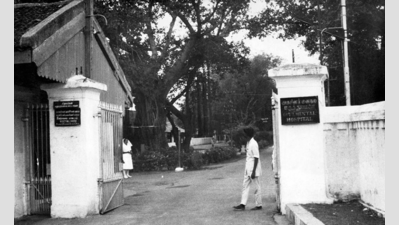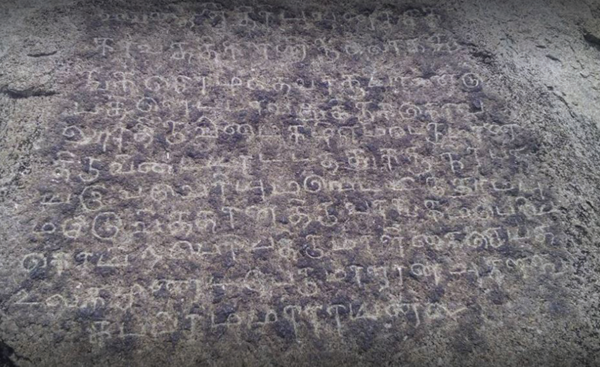ARTICLE AD BOX

Long before Tamil Nadu had its first book of psychiatry, ‘Manimekalai’, a second century Buddhist text by Seethalai Sathanar, describes a ‘madman’ crying, blabbering, falling, shouting and picking fights with his shadow.
Chennai psychiatrist Dr O Somasundaram (1926-2024), who wrote the first Tamil book on psychiatry in 1982, says in a 2008 research paper that the description fits the modern diagnosis of schizophrenia — delusions, hallucinations, disorganised speech, grossly disorganised or catatonic behaviour — as defi ned in the Diagnostic and Statistical Manual of Mental Illnesses (DSM V).

From exorcisms and madhouses to opiates, Tamil Nadu’s approach to mental health has evolved over centuries.
An exhibition by not-for-profit mental health organisation Hibiscus Foundation (that’s on today) traces these milestones.
“Ancient rock-cut caves such as those in Mamallapuram and Mamandur don’t just depict mythological tales, but also show grief, serenity, devotion and struggle in great detail. It shows that Tamil culture has always held space for emotional expression, which is how we came up with the idea of hosting an exhibit,” says Aksheyaa Akilan, founder of Hibiscus.

While public campaigns and awareness drives have had success, word-of-mouth, says Aksheyaa, has helped destigmatise mental health. “After Covid, people finally paused and gave thought to mental health,” says Dr Poorna Chandrika, professor of psychiatry at the Institute of Mental Health. “That shift in awareness shows how we’ve come a long way as a society.”Here’s a look at mental health in Tamil Nadu down the ages.PSYCHOSIS IN ANCIENT VERSEThe 7th-century Sanskrit farce ‘Mattavilasa Prahasana’ by Pallava king Mahendravarman I follows two drunken Shaivite mendicants, one of whom loses his skull begging bowl. A ‘madman’ later appears, finding it in a dog’s mouth. He rants at the dog, talks to a plant and a frog, weeps, eats scraps, and screams about demons in his stomach that are vomiting tigers.“These are clear signs of psychosis,” says Dr Vijaya Raghavan of Schizophrenia Research Foundation.
“The character is possibly experiencing visual and auditory hallucinations, delusions and emotional dysregulation, symptoms consistent with schizophrenia. The imagery reflects a lived and terrifying experience for the character, which is a hallmark of psychosis.”THEN CAME THE ASYLUM OF THE FEARFULThe earliest record of a community mental health centre in Tamil Nadu appears to date to 11th-century Kanyakumari during the Chola period, where Jain monks set up ‘anjuvaan pugalidam’ (an asylum for the fearful) near monasteries to shelter those suffering from fear, trauma, or distress.The asylums received royal and merchant patronage, especially during famines, wars and natural disasters. Among the most well-known was the asylum run by the Jain ascetic Naminadha in Thirukovilur, Kallakurichi, which was supported by the Shaivite queen mother Chembian Mahadevi. Temple inscriptions at Vedaranyeswarar in Vedaranyam attest to their existence.NOTES FROM THE JESUITSBetween the 16th and 18th centuries, Jesuit missionaries in TN documented cases of what they perceived as ‘demonic possessions’.
These accounts, preserved in the Madurai Mission Annual Letters, describe people “tormented by spirits” with symptoms such as convulsions. Portuguese officer Manuel de Moraes wrote of brahmin ceremonies where a man “disguises himself as a demon” to aid childbirth, complete with drumming, feasts and theatrics.INSIDE DALTON’S MADHOUSEIn 1794, the East India Company appointed Dr Valentine Conolly to run a ‘house for persons of unsound mind’ with just 20 inmates.
By 1804, under Dr Dalton, the asylum was renovated and renamed “Dalton’s Mad Hospital,” housing 54 inmates. The Madras Lunatic Asylum opened on May 15, 1871, with 145 patients. The asylums housed men, women, children and criminals (kept in solitary confinement), while those exhibiting suicidal tendencies were monitored. While a few recovered and returned home, most remained institutionalised for life. Anyone could commit another to an asylum until officer Daniel Defoe forced the govt to come up with regulations for admissions.
“Several are put into mad-houses without being mad,” he wrote. “Wives put their husbands in them that they may enjoy their gallants; husbands put their wives in them, that they may enjoy their whores; children put their parents in them that they may enjoy their estates before their time.” His efforts led to the Mad House Act of 1828, which made wrongful detention illegal and laid the foundation for regulating mental institutions.Some of the first mental asylums in India were established in the 18th century by the British “with the sole guiding principle of separating the mentally ill patients from society”, says the 2018 report ‘History of psychiatry: An Indian perspective’ published in the Indian Psychiatry Journal. In the 1920s, “to promote the illness model and reduce stigma, asylums were renamed mental hospitals”. Owen Berkeley-Hill, medical superintendent in Ranchi, was instrumental in changing the word asylum to mental hospital by a govt notification in 1920.



.png)
.png)
.png)
















 8 hours ago
3
8 hours ago
3









 English (US) ·
English (US) ·